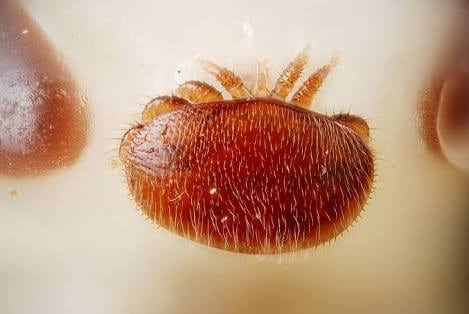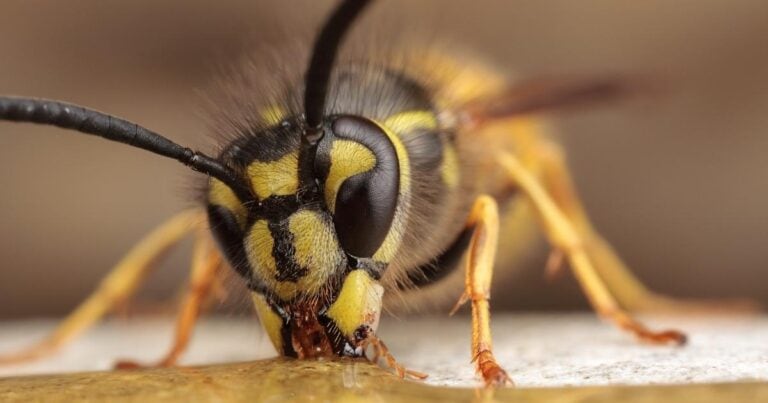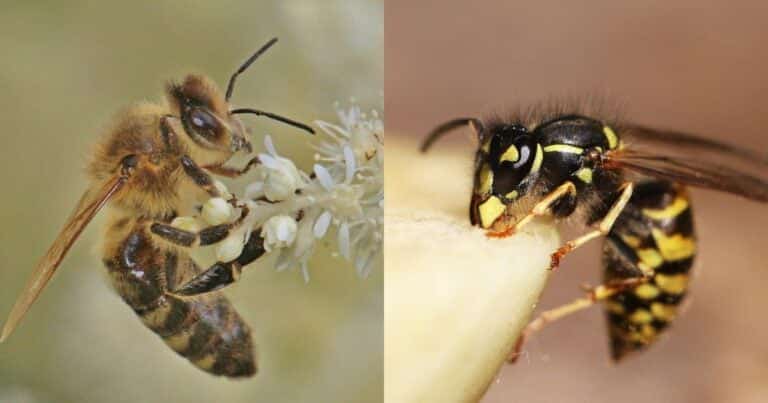Varroa Mites – a global threat to honey bees.
Varroa mites – a global threat to honey bees. Varroa mites, also known simply as Varroa or bee mites, are tiny external parasites of honey…
Varroa mites – a global threat to honey bees.
Varroa mites, also known simply as Varroa or bee mites, are tiny external parasites of honey bees. They are oval-shaped, with eight legs. Females are reddish-brown and 1-1.8mm long, whereas males are yellowish-white, smaller and somewhat rounder, being 0.75-0.98mm in length. The mites feed upon the ‘blood’ or hemolymph of the bees, and in the process transmit diseases and viruses such as the deformed wing virus (DWV). Varroa mites are obligate parasites of honey bees and cannot survive for long if deprived of their hosts; this forms the basis of some control methods.
The mites reproduce on a ten-day cycle which commences when an adult, mated female enters the larval cell of a honey bee. Once the cell is capped, the female mite lays her eggs, which usually consist of several females and one male (from an unfertilised egg). The young mites feed upon the bee larva and emerge from the cell with the bee after it has completed pupation. Mite infestations can build up in a colony over 3-4 years, causing an abnormal brood pattern, weakened larvae and crippled adult bees, with reduced weight and longevity. Although largely dependent on the brood – the developing larvae and pupae – the mites will also parasitise adult bees, and may be visible on the thorax or in the abdominal folds. A significant mite infestation will eventually result in the death of the honey bee colony, usually between late autumn and early spring. The infection caused by the mites is termed varroosis, whereas the symptoms presented by the colony are collectively referred to as parasitic mite syndrome.
There are a number of species of honey bees, but most build their nests in inaccessible, elevated sites in order to avoid predation. Only two, the European Honey Bee (Apis mellifera) and the Asian Honey Bee (Apis cerana) construct their nests in cavities, rendering them vulnerable to the mites. However, the natural distributions of these species are mutually exclusive, and until comparatively recently A. mellifera was not exposed to Varroa mites.
Varroa jacobsoni was first described in 1904 on A. cerana in Java. At the time, it did not appear to represent a serious threat, as it was confined to drone brood and was not lethal to bee colonies. Drone larvae are favoured by the mites because they are larger than worker larvae and have a longer period of development.
Relocation of A. mellifera to the native range of A. cerana resulted in contact with the mites, probably in the Philippines, and infection spread quickly across the globe, with the notable exception of Australia. In the early 1960s the mites were detected in Japan and the Soviet Union; in the 1970s they spread to South America; in the 1980s they gained a foothold in much of eastern Europe and North America; in 1992 they were first seen in the United Kingdom; and in the early 21st century they colonised New Zealand and Hawaii. Significantly, the mites also evolved the ability to reproduce in both drone and worker brood, causing massive honey bee colony death on a worldwide basis, and having a profound impact on the beekeeping industry.
In 2000, researchers identified two separate species of the mites. Varroa jacobsoni was detected on A. mellifera, but was unable to reproduce. In addition, two races of Varroa destructor (a ‘new’ species) were isolated, the ‘Korean’ variety of which is largely responsible for the aggressive spread of the mites around the world. Subsequently, in 2008, two separate lineages of V. jacobsoni were found to be reproducing in both drone and worker
brood of A. mellifera in New Guinea; constituting an alarmingly rapid capacity for ‘host shifting’ and underlining the necessity to establish effective quarantine and control. Although European Honey Bees are almost completely defenceless against Varroa mites, some control measures have been implemented with considerable success. Varroa jacobsoni has been detected on four occasions in Queensland in 2015 and 2016 amongst A. cerana, and a concerted effort is being made to keep Australia free of further infestation.



